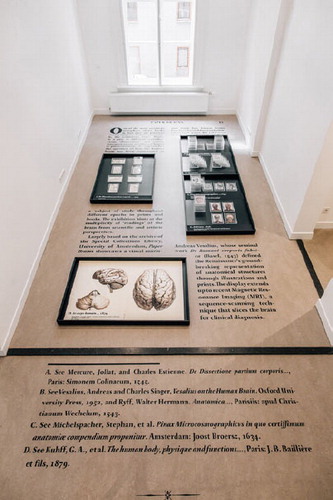
This issue of the Visual Communication Quarterly includes case studies, mixed-method analysis, student media-making, and Paper Brains.
Natalia Mielczarek shows how memes have rhetorical value and can affect people in the real world through a case study of the pepper-spraying cop meme (Lt. Pike at UC Davis) in “The ‘Pepper Spraying Cop’ Icon and Its Internet Memes: Social Justice and Public Shaming Through Rhetorical Transformation in Digital Culture.” Mielczarek investigates how memes are “more than frivolous visual jokes or mere social chatter” (p. 68), to conclude that, “memes can be instrumentalized as weapons in successful smear campaigns to shame, agitate, and bully on a mass scale with some off-line consequences that transcend public discourse” (p. 78).
Jerrica Rowlett and Summer Harlow's “Selfies and Sensationalism on the Campaign Trail: A Visual Analysis of Snapchat's Political Coverage” reveals instances in which Snapchat has reconceptualized political news. They find that although “Snapchat indeed provides hard, political news to its users”—which means the application can influence voters—it often presents this news in “a sensationalized manner by using filters, emojis, and user-generated captions” (p. 89).
In their case study, “Qatar's Hidden Women: Symbolic Annihilation and Documentary Media Practice,” for which the authors were awarded a $150,000 Qatar National Research Fund grant, Sadia Mir and Christina Paschyn use quantitative and qualitative methodologies to study “traditional gatherings unique to the Middle East in which members of the local society meet to discuss social, political, and economic issues relevant to their communities” (p. 96). As part of their award and study, they worked with four faculty members from universities in Qatar and 15 female undergraduate students who produced media to “diversify the representations of Arab women's narratives and to demonstrate a plurality and richness of voices through the use of critical and creative documentary media practices” (p. 104).
Ginger E. Blackstone explores CNN's attempt to increase its ratings by airing documentary films in “Fishing for Future Ratings: Can a New Documentary Initiative Save CNN?” She asks, “When factoring in the historical performance of documentary programming on television, are news audiences likely to embrace CNN Films in significant numbers and therefore ‘solve’ CNN's problematic ratings decline?” (p. 107).
Finally, in the Portfolio, “Paper Brains: A ‘Book Page’ in the Exhibition Space” by Danné Ojeda explores the human brain in various representations through a deconstruction and reprinting of books and prints that stretch across the floor of the exhibition space (pp. 118–125). In Ojeda's installation, a sequence of historical texts and images about the brain, spanning the Renaissance to MRI technologies, are enlarged for public interaction.
